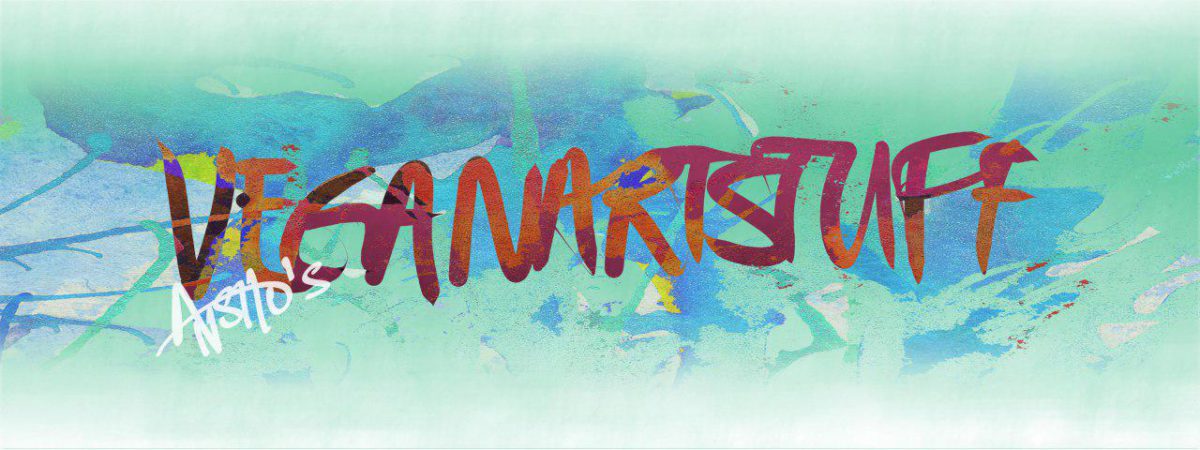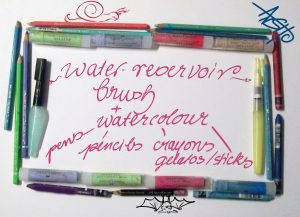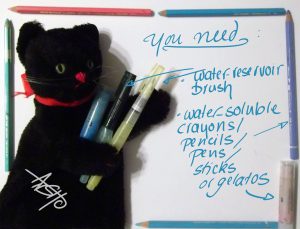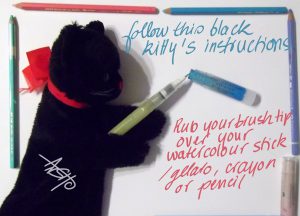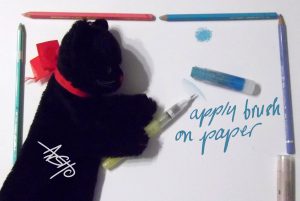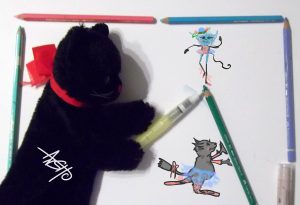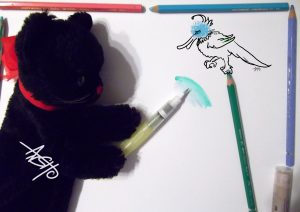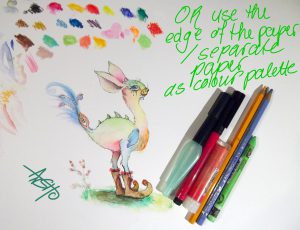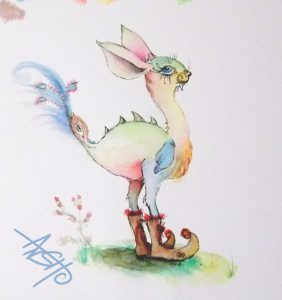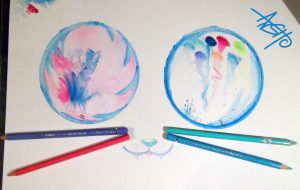Here is the new updated information on Faber-Castell. All the previously listed products are still free of animal derivatives, which includes the packaging. Additionally, I asked about the watercolours in pan format and starter set in tubes, Albrecht Dürer watercolour marker, grip fountain pens, converter, pastel toned and metallic textmarker, notebook A5 and A6– those are free of animal derivatives as well. Unfortunately I do not know whether this includes the manufacturing cycle just the finished products. Back in 2017, concerning Faber-Castell’s cruelty-free status, I received the reply, that they neither tested on animals nor commissioned animal testing; not in Europe and not anywhere else. A person in the chemistry department also mentioned back then (2017) for as long as they can look back – 30 years – to their knowledge, there hadn’t ever been commissioned such testing. It was also pointed out to me (again, 2017), that animal testing for painting -, drawing -, and writing supplies was forbidden by law in Germany.
Bearing the 2017 information in mind, I also asked about an update on the company status about the topic but unfortunately, I did not get any information about it this time, so I will place the cruelty-free status as undisclosed for now (because of lack of new information).
cruelty-free status: undisclosed for now concerning the 2021 update (in 2017, cruelty-free)
Here is my updated ( incomplete) list of products, free of animal derivatives (this includes the packaging; not known whether this extends to manufacturing cycle as well):
- Gelatos
- Polychromos coloured pencils
- Albrecht Dürer watercolour pencils
- regular erasers, kneadable erasers, pencil erasers
- all Pitt Artis products:
- Pitt Artist pen and brush pen
- Pitt calligraphy pen
- Pitt Artist pen metallic
- Pitt Artist pen sanguine /Rötel Pitt Artist
- black lead / graphite pencils/Bleistifte
- graphite aquarelle pencils
- Art Grip aquarelle pencils
- Pitt Pastel Pencils
- jumbo lead pencils
- mechanical pencils
- mechanical pencil refills; coloured and lead ones
- Pastel crayon Polychromos
- tortillon/ estompe
- soft pastels
- oil pastel crayons
- foldable watercup
- Charcoal natural Pitt/ Zeichenkohle
- sharpener
- Pitt Monochrome
- Ecco Pigment
- Grip lead pencils and mechanical pencils
- Grip Textmarker & Textliner
- Multimark Marker
- Art & Graphic Water Brush
- Graf von Faber-Castell inks
- Goldfaber Coloured Pencils
- Goldfaber Aqua Watercolour Pencils
- Oil Colours (Creative Studio)
- Synthetic brushes
- Broadpen
- Faber-Castell ink
- Grip fountain pen
- Albrecht Dürer watercolour marker
- pastel textmarker
- metallic textmarker
- (ink) converter
- watercolour in pans
- watercolour starter set in tubes+
- notebooks DinA5 and DinA6
All Faber-Castell coloured pencil ranges are free of animal derivatives.
Additional information provided by Faber-Castell – products free of animal derivatives:
- all pencils
- all mechanical pencils
- biros
- biro lead
- all coloured pencils (including Albrecht Dürer and Polychromos)
- the entire Pitt Artist line
- Fineschreiber 1511
- Gelatos
- Creative Studio pastels
- Creative Studio oil pastels
- soft pastels
- Polychromos pastels (art. nr. 128 …)
- erasers, including kneadable ones
- textliner 48
- metallic textliner
- Grip marker (flipchart, whiteboard, textmarker pens, permanent marker)
- Multimarkt
- all Uni-Ball products (attention: Faber-Castell is the distributor not the manufacturer)
- sharpener
- graphite chalk/crayon (Graphitkreide)
- ruler
- graphite and polymer lead
- indelible pencils (Kopierstifte)
- felt pen and double-sided felt pens (Faserschreiber)
- T-Shirt marker
- tortillion / blending stump/ estompe/ Papierwischer
- all lead for mechanical pencils, including coloured lead
- sanguine crayon (Rötelkreide)
- Jumbo Grip neon
- all chalk (alle Kreiden)
- ink
- watersoluble graphite pencils
- Art Grip watercolour pencils
- Pitt Pastel pencils
- Connector Deckfarben (opaque paint in pans)
- foldable watercup
- charcoal (zeichenkohle)
- Pitt Monochrome
- Ecco Pigment
- brushes (art. nr. 481600)
- Art & Graphic water brush
- oil paint (tempera)
- wax crayons art.nr. 122540, 120010, 120024
- thermoplastic wax crayons art. nr. 122540, 120404, 120405
- Pitt Graphite Crayons e.g. art.nr. 129902, 129905
- Graphite Pure pencil art.nr. 1173…
- natural charcoal art.nr. 129114, 129116, 129118, 129122
- compressed charcoal (Reißkohle) art.nr. 129906, 129903, 129900, 129913, 129916
- Creative Studio – watercolour paint in pans
Source: mail contact
